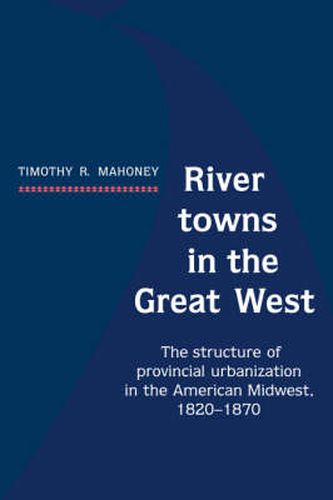Readings Newsletter
Become a Readings Member to make your shopping experience even easier.
Sign in or sign up for free!
You’re not far away from qualifying for FREE standard shipping within Australia
You’ve qualified for FREE standard shipping within Australia
The cart is loading…






Between 1820 and the Civil War, the upper Mississippi valley was at the center of national and international attention. At the edge of the northern frontier, this area, known as The Great West, was the destination of hundreds of thousands of immigrants from the East and from northern Europe. This book analyzes the development, maturation, growth, and sudden decline of the distinctive regional urban-economic system that developed in this area. Drawing from a variety of methods used in historical geography, economic history, systems analysis, and social and urban history, the author analyzes how early settlement patterns were affected by experience, climate, and geography, and, in turn, shaped the initial patterns of economic, urban, and transportation development. As the systems developed, towns became more functionally differentiated and several towns emerged as the more important competitors for regional hinterland control. The center of the analysis focuses on the efforts of these river towns to respond to a variety of settlement, economic, and transport network forces that worked in favor of the regional entrepots of Chicago and St. Louis.
$9.00 standard shipping within Australia
FREE standard shipping within Australia for orders over $100.00
Express & International shipping calculated at checkout
Between 1820 and the Civil War, the upper Mississippi valley was at the center of national and international attention. At the edge of the northern frontier, this area, known as The Great West, was the destination of hundreds of thousands of immigrants from the East and from northern Europe. This book analyzes the development, maturation, growth, and sudden decline of the distinctive regional urban-economic system that developed in this area. Drawing from a variety of methods used in historical geography, economic history, systems analysis, and social and urban history, the author analyzes how early settlement patterns were affected by experience, climate, and geography, and, in turn, shaped the initial patterns of economic, urban, and transportation development. As the systems developed, towns became more functionally differentiated and several towns emerged as the more important competitors for regional hinterland control. The center of the analysis focuses on the efforts of these river towns to respond to a variety of settlement, economic, and transport network forces that worked in favor of the regional entrepots of Chicago and St. Louis.